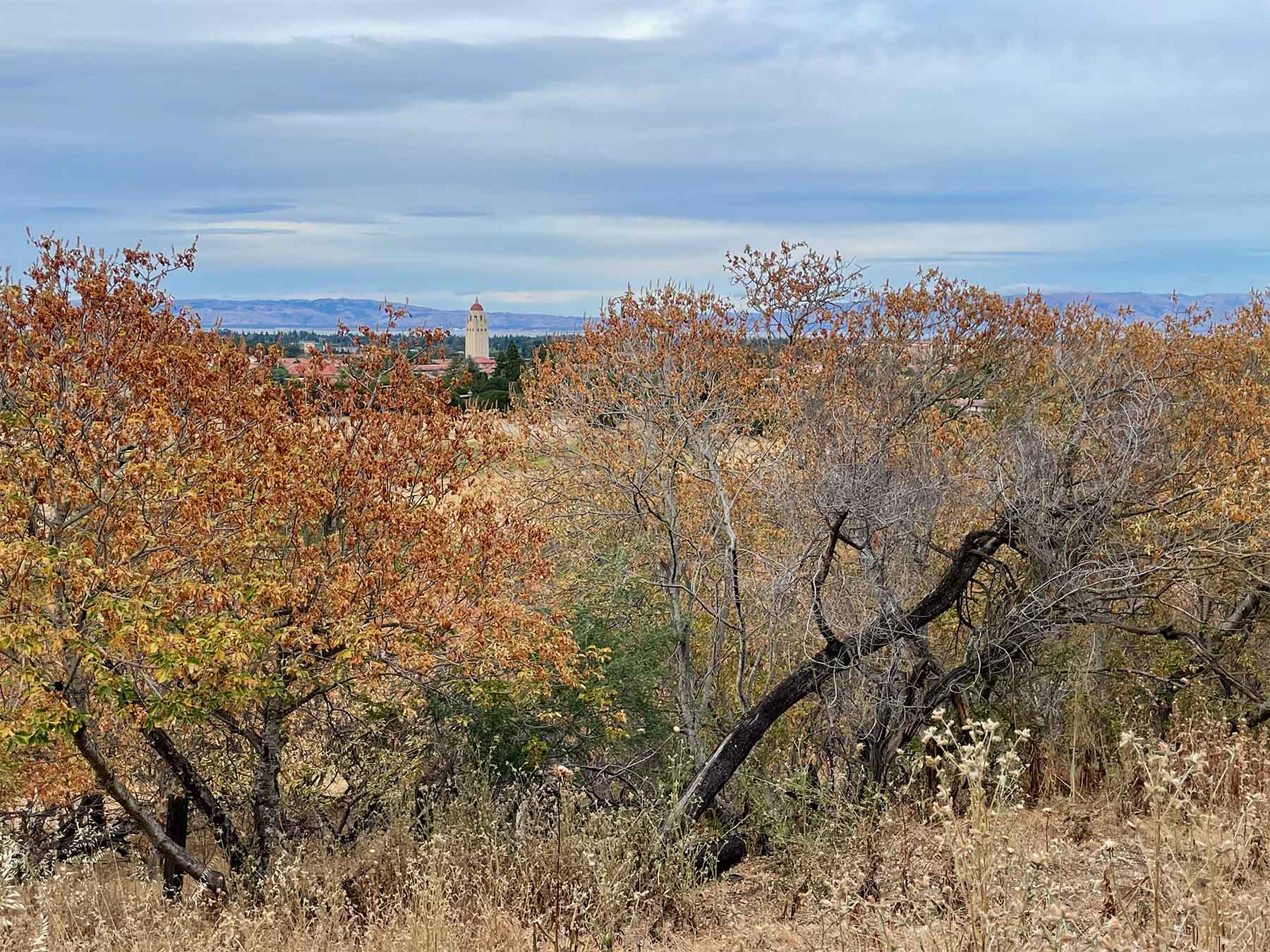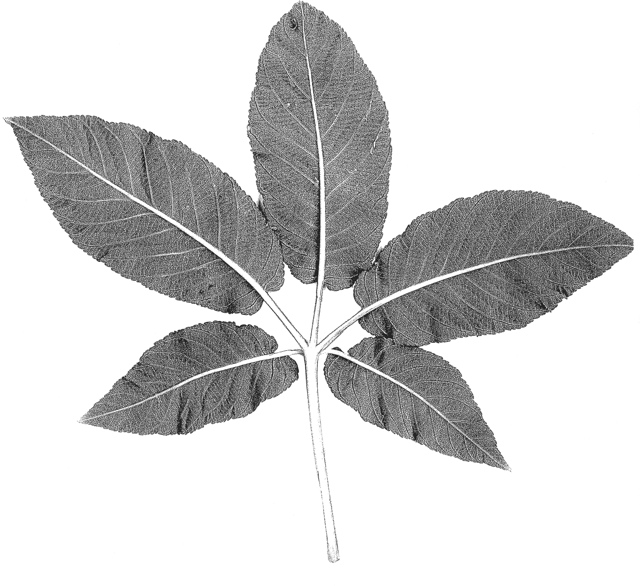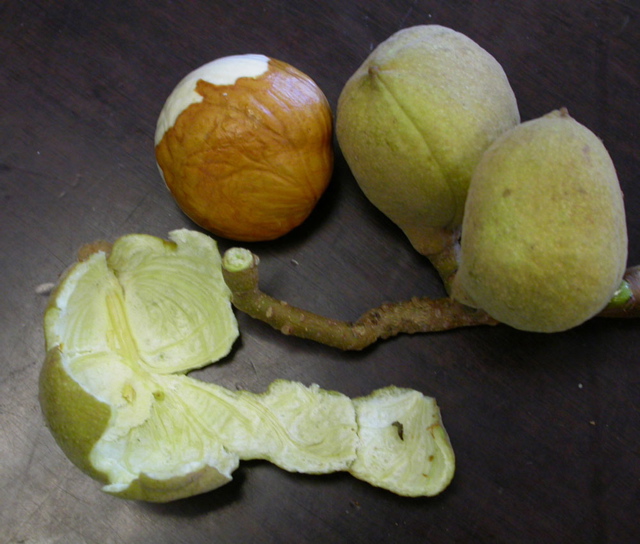Aesculus californica
 California buckeye
California buckeye
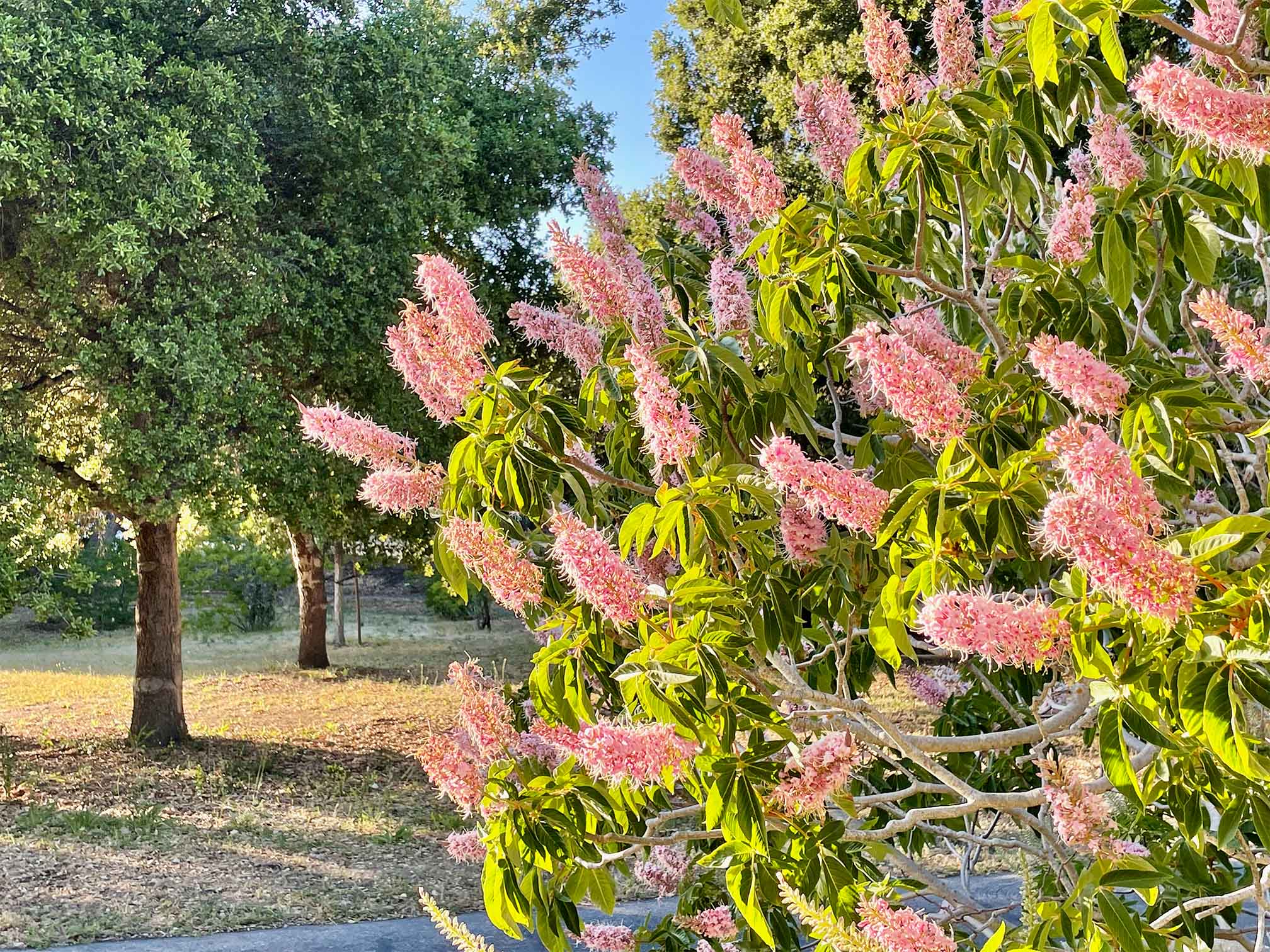
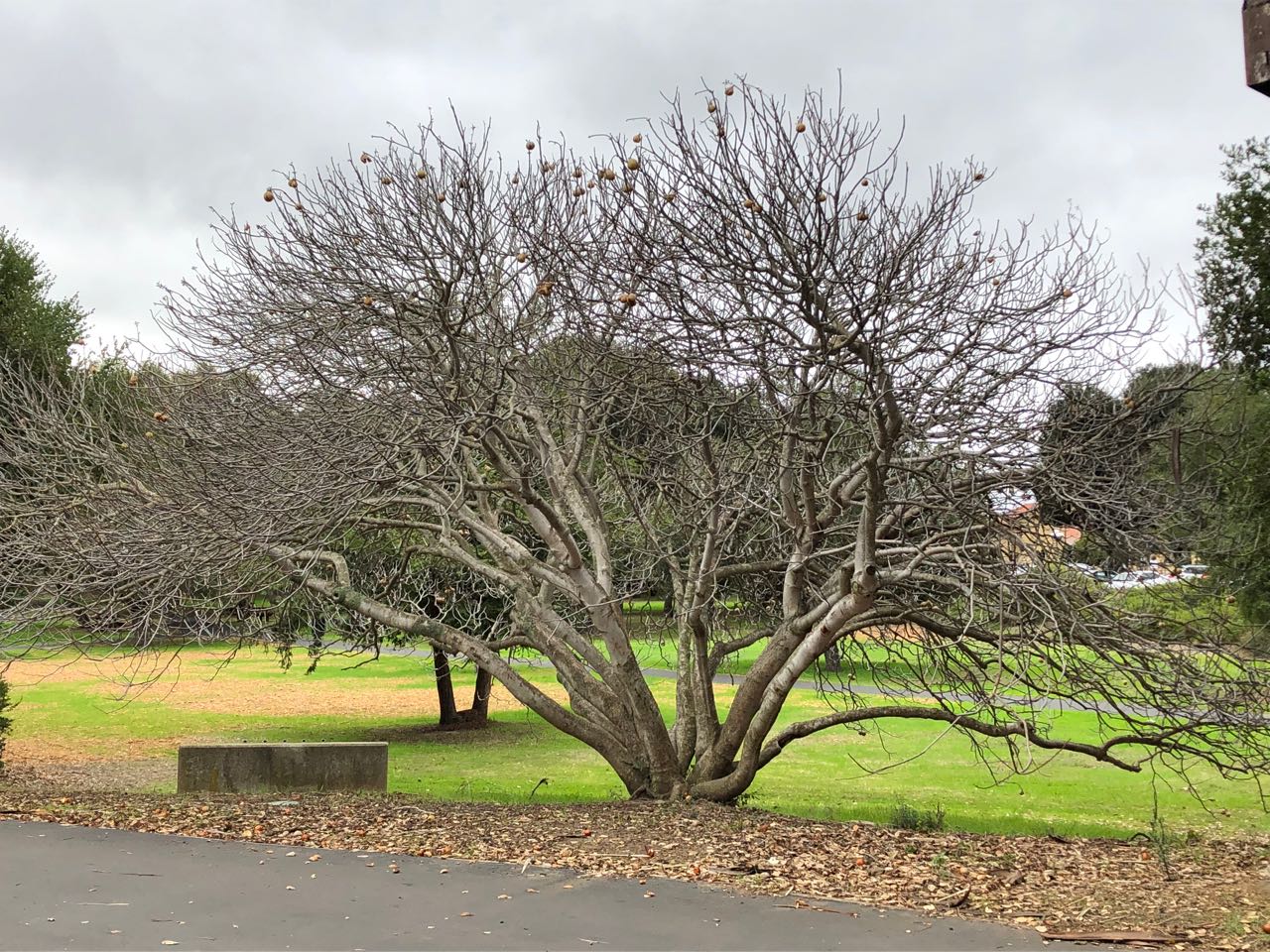
Another tree native to campus and to Jasper Ridge, the buckeye has an unusual adaptation to our extreme climate with its rainless summer months. The leaves grow up to 16 inches long with five irregularly toothed leaflets. The tree avoids loss of water from transpiration through the leaves by dropping them in midsummer, sometimes when the large, fragrant, white flower clusters are still in bloom, making a remarkable sight. The giant fruits then slowly ripen and catch the eye as one drives by Lake Lagunita. They fall when it rains and can be grown into small plants the way avocado seeds are grown in jelly glasses. The heavy fruits are clearly not dispersed by wind, nor by birds or animals. Being round, they tend to run downhill and possibly into running water that can carry them to a new site. Buckeye flower buds may be cut and brought indoors in spring before they open and will then unfurl in their vase, just as the wooded hillsides near campus are acquiring their splendid apple green foliage.
Occurrence of buckeyes, as on the Golf Course, may indicate the site of former habitation by Native Americans. They prepared the large seeds by macerating them in water to leach out tannins and the toxic substance saponin and subsequently grinding them into meal. Another method used was to steam them for several hours, slice thinly, and suspend them in a river in a basket until the poison was dissolved away. As this took several days, it is not clear that a newcomer to this type of food preparation would necessarily survive the first attempt. The crushed seeds were also used to stupefy fish.
Is the name Aesculus for the foreign horse chestnut, that is also edible (with care, just as with our buckeye), related to the Latin esculentus, which means edible?
Junipero Serra Boulevard, from Lake Lagunita to Fremont Road, is the place to see the fresh green developing against the contrasting drab oak background in February and March. Wild specimens also occur on Roth Way, and along San Francisquito Creek, for example near the Stanford Shopping Center. There is a tremendous, old, twisted California buckeye with a window at the back of the Classic Residence housing development near the southern end. A second distinctive specimen is nearby.
Illustrations: Buckeye Meadow, Oval Ear: A. californica & A. pavia blooming (John Rawlings, 3 May 2003) | Jasper Ridge photo archive.
Name derivation: Aesculus – the Latin name for a kind of oak bearing edible acorns but applied by Linnaeus to this genus; californica – of California. From California Plant Names.
About this Entry: The main text of this entry is from the book Trees of Stanford and Environs, by Ronald Bracewell, published 2005. John Rawlings subsequently added the Classic Residence locations. Family updated from Hippocastanaceae to Sapindaceae (Oct 2017, SP). Minor edits (Feb 2023, SP).

